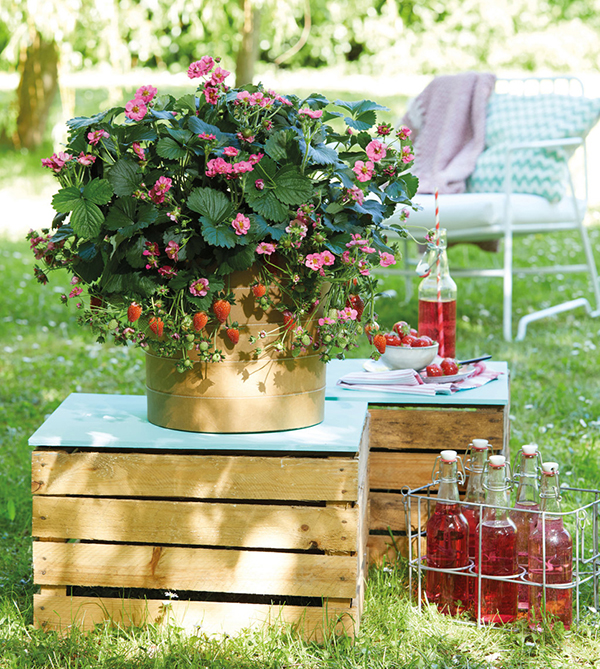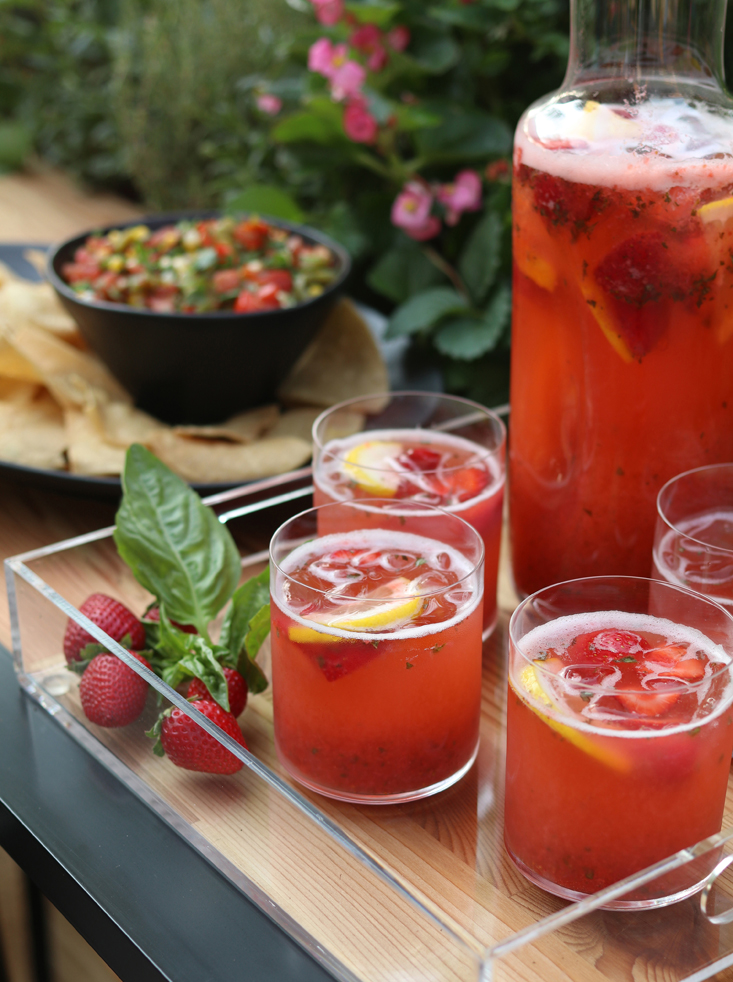5 Tips for Growing Edible Plants in Small Spaces
You could harvest your next meal from your expansive vegetable garden, but what if you’re someone who gardens solely on a balcony or don’t have room for a dedicated veggie patch? Good news! You can grow plenty of herbs, small fruits and vegetables in containers, and you might find a few edible flowers growing in your landscape, too. Here are five tips to get you started.
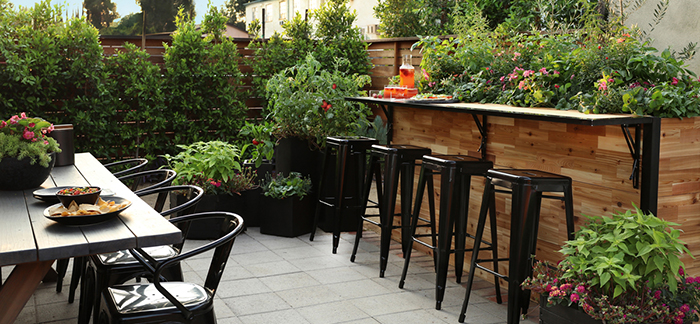
Tip #1: Maximize your patio space
Use the square footage you have by turning it into a multi-use space for ornamental plants and those with edible flowers, fruit or foliage. We took Gardener’s Supply Company’s eight-foot-long, reclaimed wood outdoor planter bar and filled it with aromatic herbs and strawberries that can be conveniently plucked for craft cocktails when entertaining. Ornamental begonias, lantana and moss roses add a punch of color to the space in the surrounding containers.
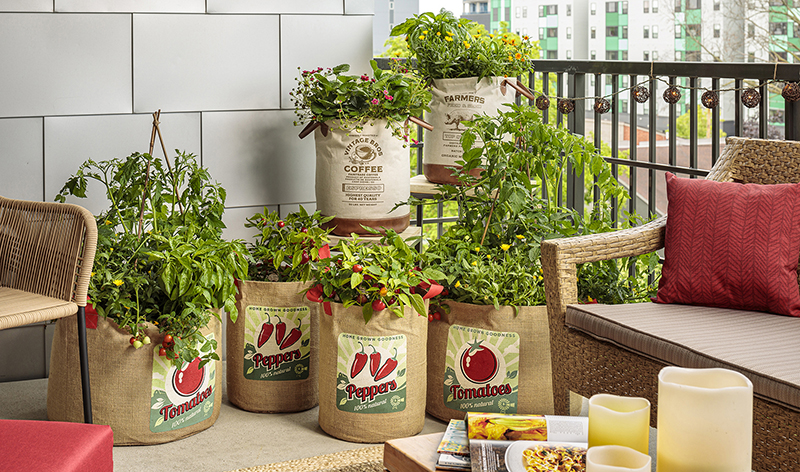
Tip #2: Choose smaller varieties to grow in containers
Dwarf varieties of fruits and vegetables that are just the right size for growing in containers are now widely available. Be selective when you buy and choose those that only grow a foot or two tall but still produce a decent yield like Goodhearted™ cocktail tomatoes and Fire Away™ Hot and Heavy snack peppers.
One major advantage to growing edible plants in containers is they are easy to rearrange if necessary to catch the best light. If your peppers don’t seem to be ripening, pick up and move the pot to a sunnier location. That wouldn’t be so easy to do if they were planted in the ground.
Tip #3: Grow and feed ornamentals and food crops in separate containers
Who needs Whole Foods when you can grow your own organic strawberries? When you grow your own food, you know it is safe and healthy. Do your best to grow what you eat organically, feeding them with organic nutrients like compost, compost tea, fish emulsion and certified organic fertilizers. This is different than what you feed your petunias to encourage more flowers. By keeping your ornamental and edible plants in separate containers, it’s easy to feed each the type of plant food they prefer.
Make it! Agua Fresca Ingredients:
Place all ingredients in a blender and blend until smooth. Garnish with slices of strawberries and lemons and enjoy! Yield: 8 cups |
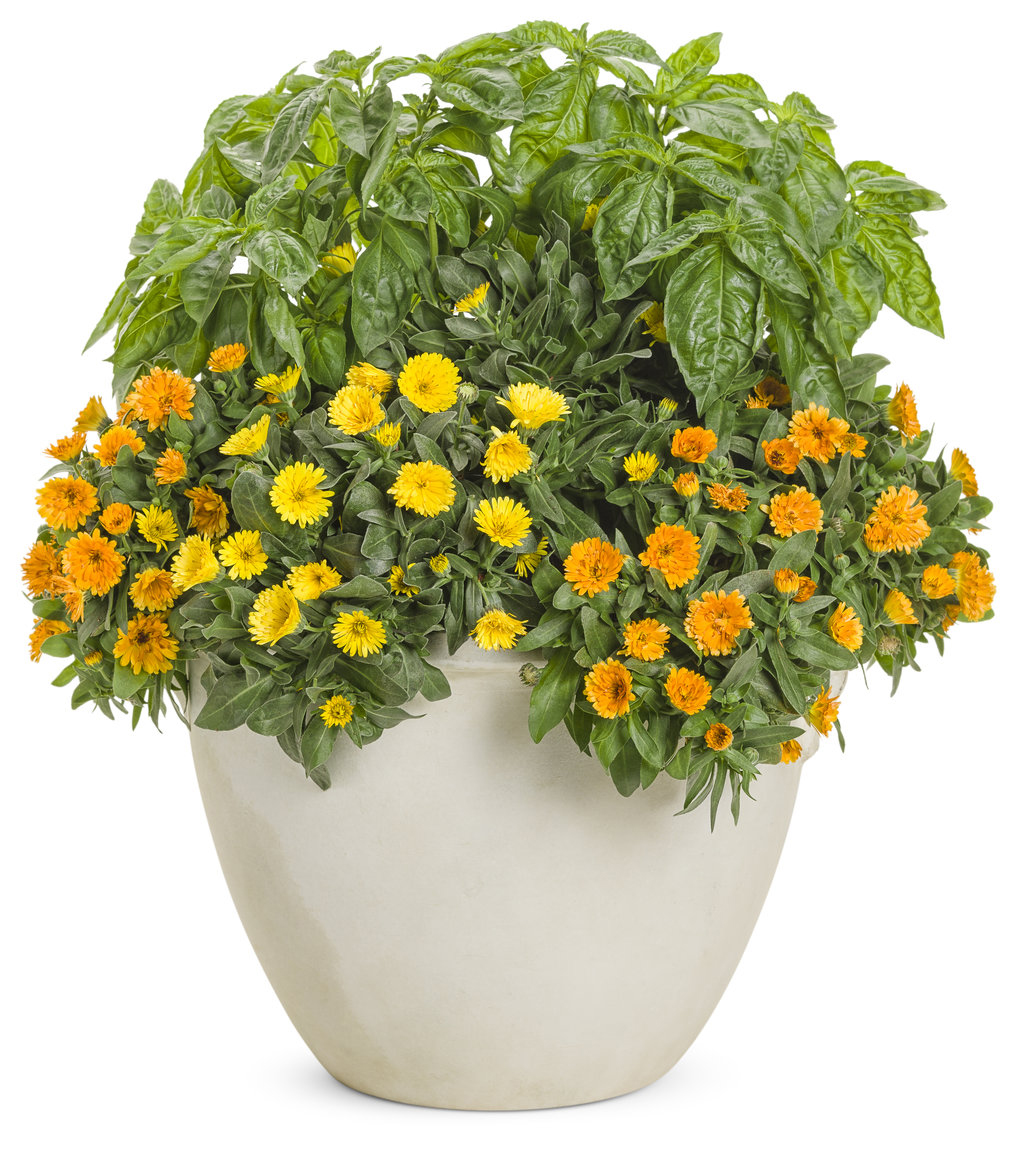
Tip #4: Grow herbs and edible flowers together
Make the best use of the space you have by combining edible flowers and herbs together in containers. Here, we’ve combined Amazel® Basil with edible Lady Godiva® calendula flowers in one large patio pot. Since both will be harvested for consumption, feed the whole container with organic fertilizer. The flowers will keep the arrangement looking full while you’re waiting for the herbs you’ve harvested to grow back in.
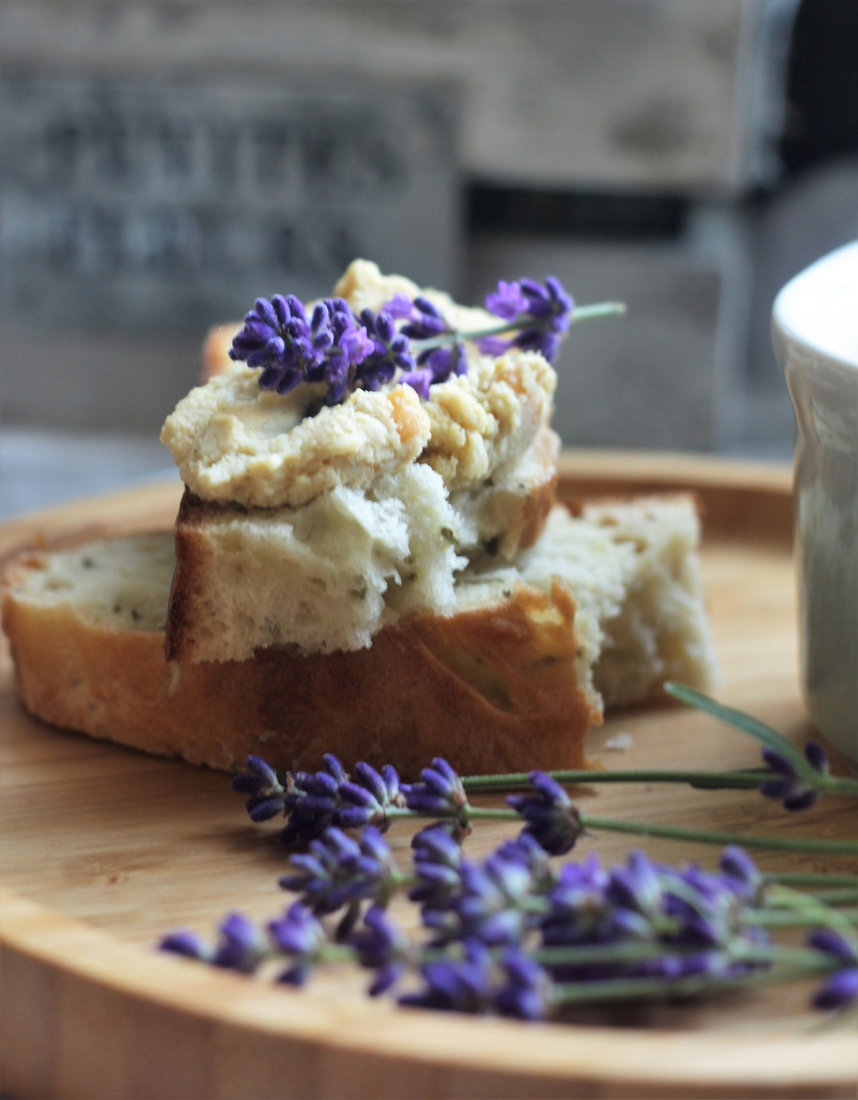
Tip #5: Look around your landscape to find more edible flowers
In addition to the fruits, vegetables and herbs you are growing in containers, you may discover that some of the plants in your landscape are edible, too. If you garden organically, you’ll know it is safe to harvest from them.
For example, lavender flowers make a delightful addition to sweet breads, shortbread cookies and lemonade. Hibiscus and bee balm flowers can be dried and used to make tea. The freshly picked petals of roses and daylilies can be sliced thin and added to green salads and fruit cups. Calendula petals will add a slight peppery flavor to your corn muffins and soups.
Learn much more about edible flowers in these two useful books: Backyard Foraging by Ellen Zachos (Storey Publishing, 2013) and Eat Your Roses by Denise Schreiber (St. Lynn’s Press, 2011).
Common Sense Guidelines:
- Always be 100% sure that what you are eating is edible. Not all flowers are edible.
- New foods can trigger an allergic reaction in some people. Use edible flowers in small amounts.
- Do not eat plants that have been sprayed with pesticides, insecticides or any other chemical.
- Use organic nutrients like compost and fish emulsion to feed your edible plants.



